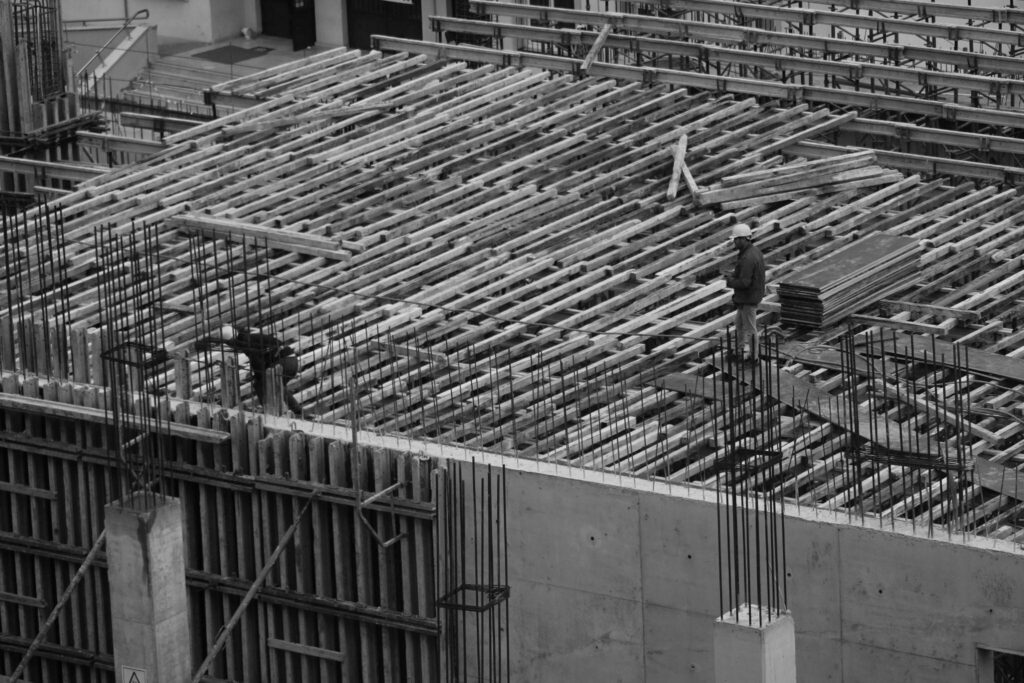
Summary:
For contractors, simple accounting software may work for a while, but, as their accounting needs grow more complex, construction accounting software is a must.
Accounting Software Built for Construction
Accounting is a basic necessity for businesses in all industries, but the construction industry’s complex requirements—and many moving parts—make its accounting processes especially challenging. For contractors, general accounting software works well for simple needs, but it lacks the sophistication to handle their growing and advanced project-based processes, transactions, and reporting.
This is where modern construction accounting software can help.
The Principles of Construction Accounting
Unlike basic accounting software options, such as QuickBooks, construction accounting software is tailored to the construction industry’s unique accounting needs. According to G2, “Construction accounting software provides users with financial management tools for construction projects and activities. These products offer features such as job costing, payroll, accounts payable and receivable (AP/AR), general ledger, and audit reporting, among others.”
So, contractors face a variety of construction accounting requirements, and the first on G2’s list is job costing. Job costing is the act of assessing a project’s total cost, including labor, materials, and overhead. Because contractors work on multiple projects at a time, it’s vital that they track expenses, resources, and workforces for each individual project—and do so accurately. This data helps them estimate potential profitability and control costs for future projects.
Though not noted by G2, contract retainage is another construction-specific accounting need. Contract retainage refers to the amount of money withheld by the customer until the project is complete. This is commonly used to ensure that contractor’s finish a job, protecting the customers should problems arise. Depending on the contract, retainage amounts vary from 5% to 10% of the total project value, and it’s the construction accounting team’s job to consider retainage and factor it into operations.
And one last construction accounting example is revenue recognition. As the name implies, it is the process of accounting for revenue via several methods, which include
- Percentage of Completion.
This method is most often used for long-term projects (e.g., two years or longer) with contractors recognizing revenue and expenses as a percentage of work completed during a contracted period of time. - Cash Basis.
Many smaller construction firms use cash-based accounting methods, recording revenue when it is received and when expenses are paid. - Accrual Basis.
This method recognizes revenue before the contractor has received the funds. As work is completed and expenses are incurred, the contractor notes the revenue as in-hand.
Common Construction Accounting Best Practices
Taken together, these principles of construction accounting and differing revenue recognition methods require contractors to implement construction accounting best practices. When they do, they’re able to keep their businesses running smoothly, efficiently, and profitably.
Here are three common best practices contractors must apply.
- Emphasize Accurate Job Costing
Providing accurate job costing at every stage of a project is critical. Without this foundation, contractors will be hard-pressed to manage costs and remain afloat in today’s competitive marketplace. - Use the Best Accounting Method for the Size of Your Business
A contractor’s business size determines what accounting method will best fit their needs. Percentage of completion, cash basis, and accrual accounting have pros and cons. So, it is crucial for decision-makers to understand what each construction accounting method is, what the business needs, and how each method will (or won’t) benefit the business. - Invest in a Construction Accounting Software System That Works for You
Accurate job costing and the correct revenue recognition method are only helpful if a contract is using accounting software that is: - Specifically designed to handle these tasks.
- Equipped with the ability to:
Automate routine tasks.
Comply with tax laws and regulations.
Improve workflows.
Increase financial data accuracy.
North America Home Finance Inc. (NAHF) experienced firsthand the complexities of running a multi-project organization. Though not a contractor, NAHF does use contractor-style operations with numerous, complex projects run by separate companies. Some of these companies needed enhanced construction, real estate, and project management tools that exceeded the capabilities of their basic accounting software.
NAHF decided to upgrade to an “integrated, organized, customized, and smart ERP” system. Their choice? Acumatica Cloud ERP.
How Acumatica Can Help
Acumatica Cloud ERP is a comprehensive, cloud-based business management solution that offers specially designed industry editions (Distribution, Manufacturing, Field Service, Commerce, and Construction). Acumatica combines project accounting, customer management, business intelligence, and financial management functionalities in a single, centralized system. With Acumatica’s modern construction accounting functionalities, contractors can easily and efficiently manage job costing, contract retainage, revenue recognition needs (and more)—alleviating the time-consuming headaches contractors would otherwise endure with general accounting software.
For NAHF, the decision to implement Acumatica, with the help of The Answer Company team, has produced incredible results. As noted in NAHF’s Success Story:
With Acumatica Cloud ERP, NAHF was able to gain much stronger visibility into each company’s financial performance, project progress, and client information. Unlike Xero’s dashboards, Acumatica’s dashboards were easily customized to include all their entities and can detect anomalies or outstanding amounts in their accounting. All their reports now showed balance sheets from each entity, allowing for easy cross-comparison. Most of all, Acumatica’s dashboards generated financial KPIs for all projects, generating an up-to-minute view of cash flows and revenues.
NAHF CEO George Lawton also had this to say about choosing Acumatica: “Acumatica was the obvious choice because not only does it offer this web of systems that we can mix and match from, but there are also no per-user fees and plenty of native integrations to save us developer costs. It is a solution that will move in parallel with our growth as a complex corporation over the next decade.”
These successes can be true for any company or contractor seeking to follow construction accounting best practices and interested in implementing a sophisticated construction accounting solution. To learn more, contact the ERP experts at The Answer Company, a top ERP consulting group committed to propelling businesses forward with customized ERP software solutions.
Related Resources


The Growing Need for Modular Construction Software
Read the Article
